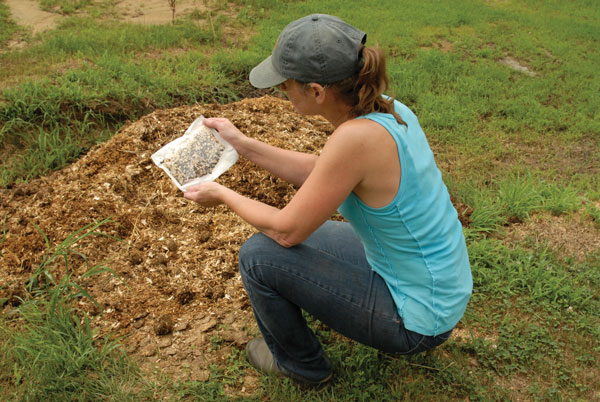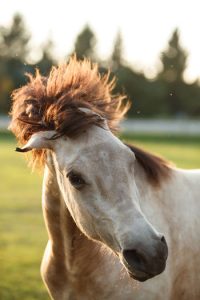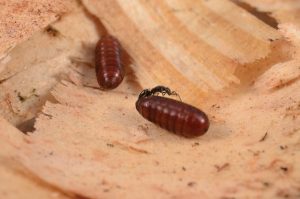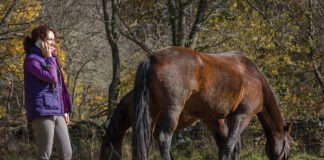
You’ve no doubt heard the old adage, “fight fire with fire.” A similar line of thinking can be used for using parasitoids for fly control by fighting insects with insects.
Also referred to as parasitoids, these tiny wasps are found in the wild, but naturally occurring numbers aren’t usually enough to make a significant dent in the fly population, which is why companies sell parasitoids specifically for fly-control purposes.
Erika Machtinger, Ph.D., assistant professor of Veterinary Entomology at Pennsylvania State University, has been working with parasitic wasps for a decade and refers to them as “the ninjas of the fly control world.”
These nocturnal, gnat-sized insects don’t bite or sting animals or humans, but they’re deadly to developing flies.
Getting Started
If you’ve had a fly problem in the past and are determined to try something different this year, you need to determine the fly species you’re dealing with before using parasitic wasps.
“These parasitoids will actually [attack] many different species of flies, including fruit flies, but in general, they will primarily attack what we call ‘filth flies,’ which include stable and house flies,” explains Machtinger.

Black flies, deer and horse flies, biting midges, and mosquitoes don’t develop in manure and waste material like filth flies do, so parasitic wasps won’t control them. They also aren’t effective against face flies, because face flies have calcified pupae that the parasitoids can’t get into.
Before you begin, be certain the target flies are developing on your property, not your neighbor’s. Some flies can travel 2 to 8 miles from their development sites, so if you live near a poultry or cattle operation, your fly problem may be coming from those farms. If that’s the case, releasing parasitic wasps on your property won’t be effective.
Companies marketing parasitoids generally sell several species in the genera Muscidifurax and Spalangia. When you contact a company, they can determine which species will be most effective in your area and set up a shipment schedule.
“In the wild, one genus called Spalangia are found more in the South, and Muscidifurax more in the North, but typically most of these parasitoids can work wherever they are released,” notes Machtinger. “There are some that are currently marketed called Nasonia that do not work for controlling filth flies, so it’s important to ask your supplier what they are selling.”
How to Release
Timing and release are key to success when using parasitoids for fly control. Ideally, you should time your first release of parasitic wasps prior to fly season.
“This gives the parasitoids time to attack any flies that are currently developing and prevent an outbreak,” says Machtinger. “If you have a bunch of flies already, you may need more than just parasitoids to help reduce the population.”
Once you sign up with a commercial provider, you’ll receive your order periodically throughout fly season, such as every two to four weeks.

Adult parasitoids wouldn’t survive shipping and handling, so the companies send them as they are developing. You’ll receive a sealed bag of sawdust containing house fly pupae that have been parasitized. Because they come from the laboratory, there’s no concern of flies emerging from any of the pupae.
Follow the specific instructions that come with your order.
Keep the bag at room temperature away from direct sunlight. By holding the bag up to light, you can tell when the adult wasps start emerging, which should be within a couple days.
Release according to provided directions, avoiding hot mid-day temperatures, and windy or rainy conditions. The provider typically instructs that they be released on or right around manure areas.
“You need to make sure you are releasing them where flies develop since they aren’t good fliers,” says Machtinger.
One Piece of the Puzzle
Parasitoids are totally natural and non-chemical, but you can’t rely on them alone to control flies, as flies have a much higher reproductive rate. However, they can be an effective part of your fly management plan when combined with such practical measures as good sanitation and regular manure removal.
“I wouldn’t go a summer without them; it’s made a huge difference,” says Kathryn Wade, who has two horses and a donkey on her 5½-acre property outside Tucson, Ariz.
“It helps to involve horse-owning neighbors nearby so you can all use them,” adds Wade, who has been using parasitoids for six years.
She notes that manure management is also crucial. Wade cleans her corrals daily and hauls manure off the property weekly.
Watch Insecticide Use
Obviously, parasitic wasps are insects, making them vulnerable to insecticides. Since they spend most of their time in the habitat where flies are developing, they should be safe unless you directly apply insecticides to the area where they are released.
Some farms utilize spray systems to automatically disperse misting insecticide in the barn, but you may want to rethink this strategy.
“I strongly recommend against automatic sprays in the barns, even those using ‘natural’ compounds,” cautions Machtinger. “Not only do these not work to kill flies, they help promote insecticide resistance and expose animals and people to chemicals in the environment.”
This article about parasitoids for fly control appeared in the March 2021 issue of Horse Illustrated magazine. Click here to subscribe!
Where to PurchaseArbico Fly Eliminators Green Methods Fly Parasites IPM Labs Spalding Labs Fly Predators |





